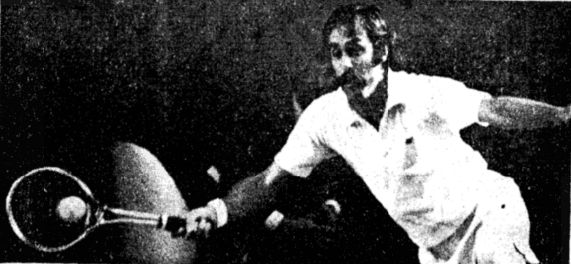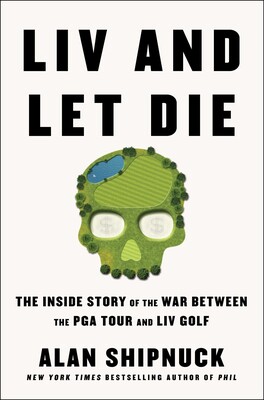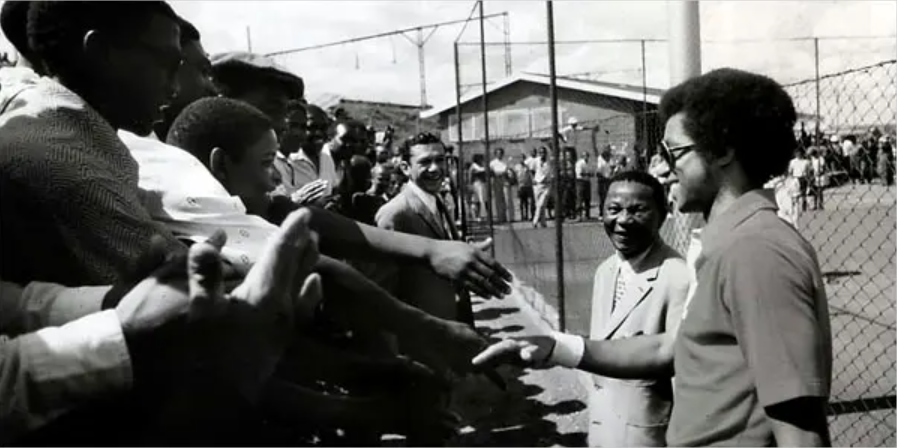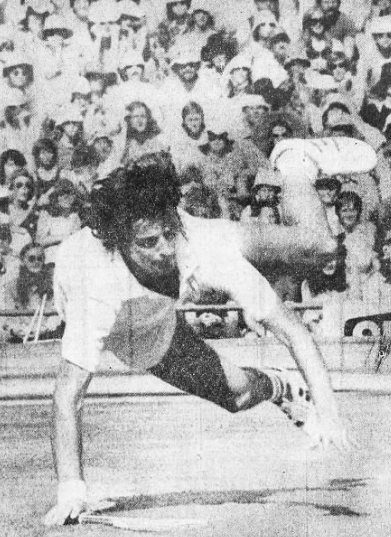Many tennis fans are worried about the arrival of money from Saudi Arabia in the game. This week marks a watershed, as the ATP NextGen Finals take place in Jeddah. It’s the first time an official tour event has been played in the Kingdom, though several star players have taken part in the Diriyah Cup exhibition, first held in 2019.
It could have been even more dramatic. For months, rumors swirled that the WTA Finals would go to Riyadh. The women’s tour has struggled to find a stable, well-funded home for its signature event, and the Saudis could solve the financial side in a single stroke. But it was too much, too soon: Enough players bristled at the idea of going to the kingdom that the proposed deal was shelved.
Apart from the fact that Saudi Arabia lacks history with the sport and has no professionals of note, the problem is the kingdom itself. Its leaders were tied to the 9/11 attacks and, more recently, ordered the murder of journalist Jamal Khashoggi. Crown Prince Mohammed bin Salman heads an authoritarian, repressive government that is particularly backwards in its treatment of women. No single one of these offenses would be enough to keep the tennis tours away–after all, the WTA recently crawled back to China, and the ATP never left. Still, the way the Saudis and other Gulf nations have used their immense oil wealth to muscle onto the world’s biggest sporting stages and attempt to “sportswash” their public images should give pause to everyone in tennis.
The loudest warning signal is the cautionary tale of the LIV golf tour. (The name is pronounced as in “live free” and represents the roman numeral for 54, the number of holes in the tour’s three-day events.) The Saudis took an existing idea for a new golf tour, then offered eye-watering signing bonuses and record prize money to the game’s stars. The resulting division left the PGA in dire financial straits, drowning in legal bills and struggling to retain sponsors. LIV launched in June 2022, and twelve months later, the rival tours reached a tentative agreement to merge, leaving the 108-year-old PGA as a junior partner.
This is the story of Alan Shipnuck’s new book, LIV and Let Die: The Inside Story of the War Between the PGA Tour and LIV Golf. A long-time golf writer, Shipnuck gives us the background on every aspect of the saga, including past disputes between the PGA and its players, the motivations of the stars who jumped (and those who didn’t), and the paths taken by various principals, from Yasir Al-Rumayyan, the golf-loving head of Saudi Arabia’s sovereign wealth fund, to PGA commissioner Jay Monahan, to former star and LIV CEO Greg Norman.
The personalities matter: The story could have turned out very differently. Al-Rumayyan is a golf fanatic, which meant that he had a personal stake in Saudi involvement in the game. Monahan, stung by the perceived threat of an earlier upstart, the Premier Golf League, saw LIV as an existential threat and refused to even speak to anyone from the Saudi-backed league, let alone seek a compromise. Norman, despite his status as one of the game’s all-time greats, has always been an outsider. Decades earlier, he had put together a proposal for a rival tour, only to be shot down by the old guard.
I approached this book with a specific question in mind: Could something like LIV happen to our sport as well? It likely could, and it probably wouldn’t even cost the interlopers quite as much money. (LIV spent well over half a billion dollars on signing bonuses alone.) At the same time, it probably won’t. As far as I can tell, the Saudis mainly want to be involved in international sport; it was only the confluence of personalities that led to their takeover of professional golf. So long as the ATP and WTA figure out a way to accept money from the kingdom–and probably host an event or three on Saudi soil–a rival tour would serve no purpose.
The Saudis seem to have two goals as they make one splash after another in the international sporting scene. Neither is new: Qatar, the United Arab Emirates, and many others have paved this path before. First, they want to clean up their image so that the international public views them as something other than a backwards, pariah nation. This is about more than just likeability: The less odious their reputation, the more likely that they can pursue international opportunities, whether that means investing in a major company or throwing a party at a famous venue.
Second, the Crown Prince realizes that oil wealth is not eternal and aims to diversify the economy. One prong of that strategy is to transform the kingdom into a major tourist destination. Sportswashing plays a role in this, but there’s more to it than just tidying an image. The nation needs destinations and events. Diriyah Cup was one, and years before LIV, there was a Saudi stop on golf’s European Tour.
Sport serves both goals. That said, a certain kind of sporting event is better than others. The key is star power. It’s one thing to become part of a major international tour, but I doubt many people have changed their view of Kazakhstan due to the ATP 250 in Astana. Much more useful is to be associated with a superstar. LIV would have been dead in the water without a few marquee names like Phil Mickelson and Dustin Johnson. The last Diriyah Cup featured Daniil Medvedev, Andrey Rublev, and Stefanos Tsitsipas. A Saudi football club offered more than $1 billion for Paris Saint-Germain star Kylian Mbappé.
Thus, the Saudis have focused on certain types of events and leagues. One of LIV’s innovations (lifted wholesale from the plans of the Premier Golf League, which never got off the ground) was to limit the number of tournaments so that the best players would face off, week after week. The PGA–like, to some extent, the tennis tours–didn’t do that, at least until LIV forced them to reconsider their calendar and rewards structure. For a promoter who wants a star-studded field, an exhibition is one solution–but it’s just an exhibition. Appearance fees are another approach: There’s a reason why ATP and WTA tournaments in Doha and Dubai tend to be stronger than the typical non-mandatory turnout.
The most straightforward solution is to host an event where the top players are required–or at least heavily incentivized–to participate. The WTA Finals fit that profile, as would an ATP Masters 1000 tournament. The LIV tour was a very expensive way of accomplishing that, as the 2023 campaign included 14 loaded fields, only one of which took place in Saudi Arabia.
If we were talking about some other oil-rich country–say, Nigeria or Norway–the solution would be simple. Local investors would buy an existing tournament license, or the calendar would be tweaked, so that a significant event would take place on home soil. That’s how Saudi Arabia got started in golf, hosting the 2019 Saudi International in King Abdullah Economic City. A women’s tournament was added in 2020, and in 2023, the prize money was raised fivefold to match the men’s purse. Saudi involvement in the Ladies European Tour is a useful template. By 2023, there was another event in Riyadh, as well as an Aramco-sponsored “Team Series” spanning five tournaments in other countries.
The question, then, is whether the negatives of Saudi involvement–primarily its human rights record–will stand in the way of tennis taking a similar path. The number of men who have flown in for the Diriyah Cup suggests that there isn’t much resistance on the ATP side. Winning over the WTA could be more complicated, but on the other hand, few leagues stand in greater need of a capital infusion.
Shipnuck, almost in passing, points out another risk of Saudi investment, and it is one that tennis should take seriously. The kingdom has enormous resources, and it is not afraid to deploy them. But its leaders are also fickle. They understand the concept of sunk costs; they are not afraid to abandon a billion-dollar project when circumstances change. This week, ATP executives will see first-hand the example of the Jeddah Tower, planned to be the world’s tallest building. Construction work was abandoned in 2018, and it resumed only two months ago.
For now, the intangible benefits and theoretical future cash flows of LIV golf outweigh the staggering costs. But it’s conceivable that at some point, the Saudis could simply walk away, leaving a fractured, diminished golf landscape in its wake like an unfinished skyscraper. Should tennis accept the kingdom’s financiers as partners, the risk might be even greater: There is presumably no tennis equivalent of golf-crazed Yasir Al-Rumayyan to keep the money flowing when logic dictates otherwise.
Fortunately, we have an advantage in that we’ve seen what Saudi money can do. By detailing how the golf world sailed off course in such a short period of time, LIV and Let Die is an essential playbook for decision-makers in tennis who would prefer to avoid the same fate.
* * *
Subscribe to the blog to receive each new post by email:





